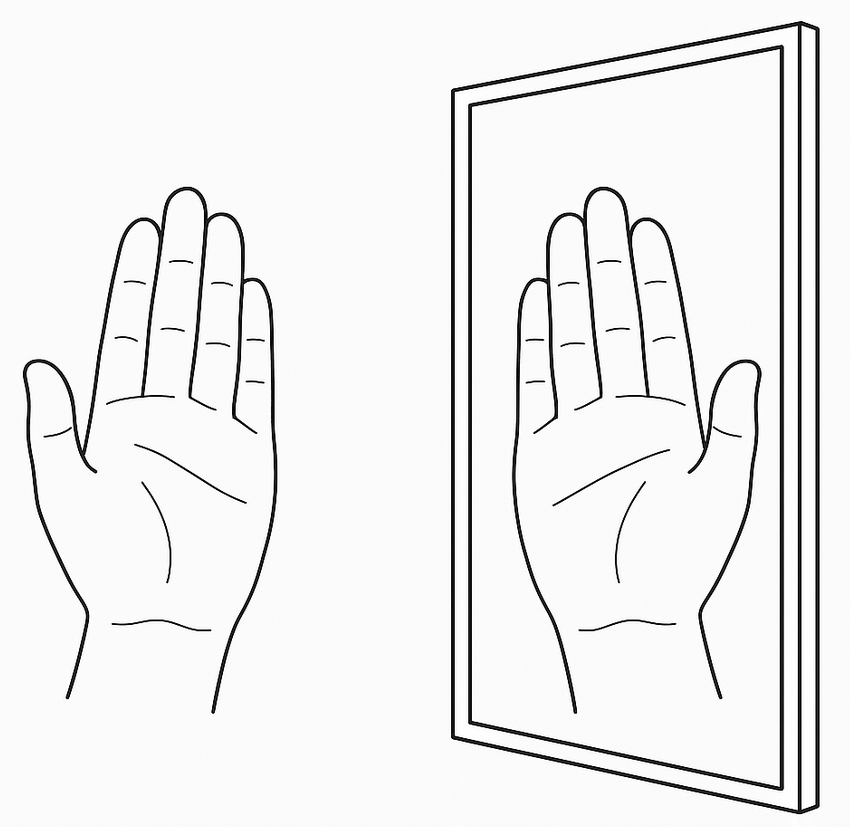Activity 2.2.1.
From a piece of paper, cut out a square shape and label it as shown below.
Fold the square in half from left to right such that the corner \(A\) aligns with corner \(B\) and corner \(D\) aligns with corner \(C.\) This will create a rectangle.
Unfold the paper and make a dotted line across the fold line and label it as \(XY\) as shown.
Notice that the left side of the line \(XY\) and the right side are exacly the same/ identical.
Now, fold the square in half from the top to the bottom such that the corner \(D\) aligns with corner \(A\) and corner \(C\) aligns with corner \(B.\) This will create another rectangle.
Unfold the paper and make a dotted line across the second fold line and label it as \(RS\) as shown.
Again, you notice that the upper side of the line \(RS\) and the lower side are exacly the same/ identical.
Next, fold the paper in half from the bottom left corner \(A\) to the top right corner \(C.\) This creates a triangle.
Unfold the paper, you will notice that a fold line appears along \(BD.\) Trace a dotted line along the fold line as showm.
Finally, fold the paper in half from the top left corner \(D\) to the bottom right corner \(B.\) This creates another triangle.
Now, unfold the paper, you will notice that a fold line appears along \(AC.\) Trace a dotted line along the fold line as showm.
Key Takeaway
There are four dotted lines \(XY, RS, AC \text { and } BD.\) Both sides of each line are exactly the same.
Therefore symmetry is when an object/shape looks exactly similar or identical on one side and the other side when the object is folded/flipped, rotated or reflected.
The four dotted lines \(XY, RS, AC \text { and } BD\) are known are the lines of symmetry. Therefore, a square has \(4\) lines of symmetry.
A line of symmetry divides an object or shape into similar/ identical parts, that is, one half is the mirror image of the other half.

